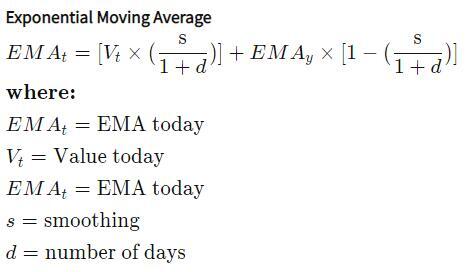
Passively managed funds like index funds have an objective to match the results of a particular index and don’t have a professional manager. As such, it’s a passive way to invest as there’s no outside help. Diversification does not ensure a profit or protect against a loss.
Class Y shares of HGIYX require an initial investment of $250,000 or more, but that is typically assessed at the plan level, not on individual investors. Eligible individual investors can also start stakes in Class A shares (HAIAX) and Class C shares (HGICX) for as little as $2,000. Before you add mutual funds to your portfolio, there are advantages and disadvantages that can help you decide whether they are the right fit for your investment style and goals. If you don’t have a broker, you can open an account with individual mutual fund companies. This can usually be done online and you’ll have to provide all the requested personal and bank details. Then, you’ll transfer funds from your bank account to the mutual fund account.
Don’t Forget to Watch Out for a Huge Hidden Tax
Doing this will help you decide how much you can set aside towards investing and you must also invest based on your risk profile. Working with an adviser may come with potential downsides such as payment of fees (which will reduce returns). There are no guarantees that working with an adviser will yield positive returns. The existence of a fiduciary duty does not prevent the rise of potential conflicts of interest.
Diversification and asset allocation do not ensure a profit or guarantee against loss. This information is intended to be educational and is not tailored to the investment needs of any specific investor. It can be key to helping you grow your worth over time and provide the kind of future for yourself and your family that you dream about. It has the potential to let you literally earn money in your sleep. So there’s no doubt that it’s worth your time to figure out how it all works.
Choose a passive or active strategy
Aside from the required initial investment, ask yourself how much money you have to comfortably invest and then choose an amount. Passive investing is a more hands-off approach and is rising in popularity, thanks in large part to the ease of the process and the results it can deliver. Passive investing often entails fewer fees than active investing.

Check out key information you can use as you begin your successful DIY investing journey. Mutual funds and ETFs have a lot in common, but there are some key differences. We’re transparent about how we are able to bring quality content, competitive rates, and useful tools to you by explaining how we make money. Bankrate follows a strict
editorial policy, so you can trust that our content is honest and accurate. Our award-winning editors and reporters create honest and accurate content to help you make the right financial decisions.
The Hartford Core Equity Fund (HGIYX)
There is no guarantee that any particular asset allocation or mix of funds will meet your investment objectives or provide you with a given level of income. Before you start buying investments, figure out which kinds of assets fit with your plan. And make sure to take advantage of diversification https://investmentsanalysis.info/ to lower your risk. As we’ve highlighted a few times now, the main benefit of mutual funds is that they offer an affordable means of diversifying your portfolio. Look to the fund’s prospectus to get a better idea of the prospects for the fund and its holdings in the coming years.
3 Neuberger Berman Mutual Funds to Buy for Robust Returns – Nasdaq
3 Neuberger Berman Mutual Funds to Buy for Robust Returns.
Posted: Wed, 06 Sep 2023 10:23:00 GMT [source]
A mutual fund pools money from many investors and buys a diversified portfolio of stocks, bonds and other securities. The fund sells shares to investors, and each share represents an investor’s equity ownership stake in Best japanese stocks the mutual fund and the income it generates. How much you pay in taxes will depend on the type of distribution. When investing in a mutual fund, there is no guarantee of income distributions, returns or capital gains.
Bond (fixed-income) funds
Therefore, an investment horizon of five years minimum is necessary to offset the impact of the charges. As a whole, ETFs are in high demand, and have proven their strength and resilience throughout the pandemic. More investors are looking to them to help diversify from regular equities, catch lucrative opportunities, and hedge positions & rebalance portfolios. Stock markets are volatile and can fluctuate significantly in response to company, industry, political, regulatory, market, or economic developments. Investing in stock involves risks, including the loss of principal.
- Here are the things you should consider before deciding whether mutual funds are right for you.
- Thanks to the rise in interest rates, a variety of fixed income securities…
- To invest in mutual funds, you must activate internet banking on your bank account.
- We can further classify an asset like equity into large cap, mid cap, or small cap.
- Specifically, investors have targeted tech mutual funds, as they offer exposure to the technology sector, and health, which the government increased its spending on throughout the pandemic.
Investing in Mutual Funds is a paperless and straightforward process. Investors can monitor the market and make investments as per their requirements. Moreover, switching between mutual fund schemes and portfolio rebalancing helps to keep returns in line with expectations.
Stock funds seek to profit mainly by the appreciation of the shares over time, as well as dividend payments. Stock funds often have a strategy of investing in companies based on their market capitalization, the total dollar value of a company’s outstanding shares. For example, large-cap stocks are defined as those with market capitalizations over $10 billion. Small-cap funds tend to have higher volatility than large-cap funds.
If it generates gains, they’ll be broken out between short-term and long-term capital gains. Since the fees are charged internally – by deduction from the NAV – you won’t see them as a line item charge on your investment statement. But you should be aware of them because they reduce the annual return of the fund. Naturally, you should favor funds that have expense ratios on the lower end of the range.
Because of this, mutual funds provide the easiest way of maintaining the right mix of investments. If an investor’s chief aim is to generate big returns, they are likely willing to take on more risk. In this case, high-yield stock and bond funds can be excellent choices. Investors looking to aggressively grow their wealth are not well suited to money market funds and other highly stable products because the rate of return is often not much greater than inflation. This type of investor has a very low-risk tolerance and should avoid most stock funds and many more aggressive bond funds.
